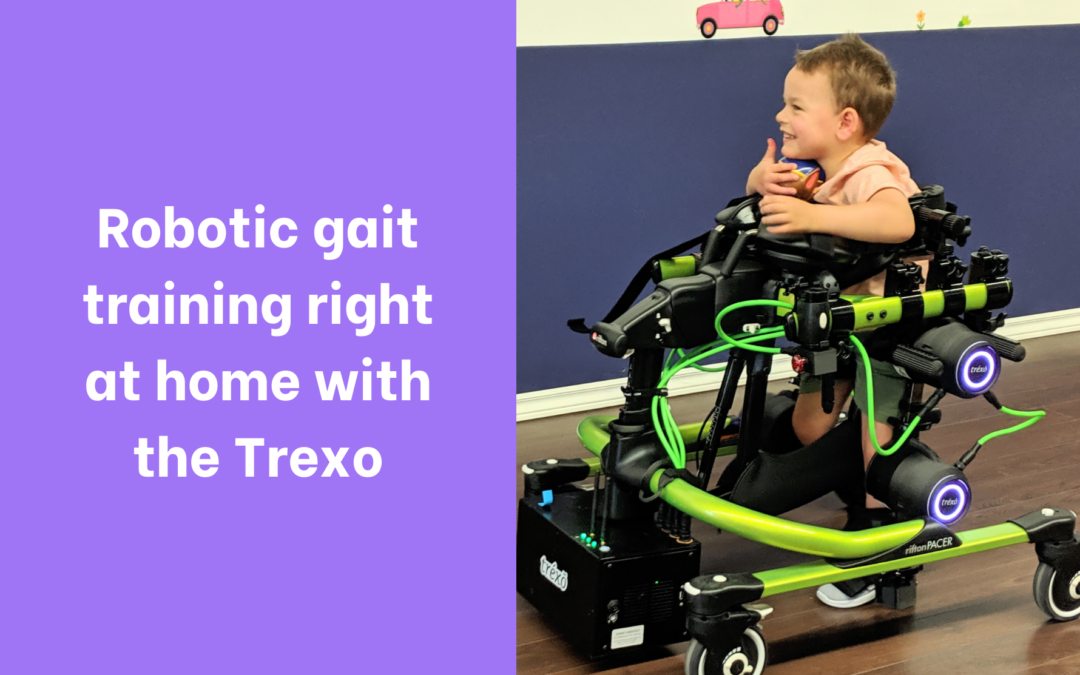Physiotherapy is a common form of treatment and management for cerebral palsy rehabilitation. But what if you could have it at your fingertips at anytime that was convenient for you and your kiddo? Enter Trexo Home, the solution to help your kiddo practice daily walking. The exact thing they need to stay active and work on those muscles to aid in their cerebral palsy rehabilitation.
But what could walking with the Trexo actually mean for your child with cerebral palsy? We did some research and here’s what we learned.
The Importance of Walking
Walking is one of the simplest forms of movement and is also one of the most beneficial activities we can do for our health. Joanne Bundonis, PT, wrote in an article for Rifton: “The human body is designed to be upright. Our bones, muscles, organs, and nervous system function optimally when upright, either walking or standing”.
Walking and standing helps improve our lifestyle. It is a form of exercise and helps develop better foot and knee alignment. The earlier a person starts to walk, the more health benefits they can get. A child who is learning to walk will grow in their cognitive, psychological, and social development. This includes improved self-confidence, awareness of surroundings, social interactions, and others. However, the development is usually slowed for a child with a motor disability like cerebral palsy.
Robots for Cerebral Palsy Rehabilitation
Robot-assisted therapy is using a robotic device to help the user perform a specific movement. The main goal is to achieve lots of movement in limited time [2]. More and more, conditions like cerebral palsy is being treated with robotic solutions.
Robot-assisted gait training devices are being studied and some studies have shown positive outcomes. For example, one study showed that after intervention of 3-5 sessions of 45–60 minutes/week in just a 3–5-week period, children with cerebral palsy benefited with an improved gait pattern. [3]. Additionally, in another study, after consistent use of robot-assisted therapy, long-lasting improvements in standing and walking were found [2].
Trexo for Cerebral Palsy
In the Rifton article, Bundonis described that motor learning happens through movement. She included: repetition, interaction with the environment, goal setting, practice and feedback as some examples [1].
Trexo performs all of the above for providing appropriate motor learning. Additionally, the Trexo can become a good habit to aid in their cerebral palsy rehabilitation on a day to day basis because it takes less than 5 minutes to set up!
Moreover, some research studies have shown the importance of goal setting in cerebral palsy management [4]. We encourage all Trexo users to set goals for this reason! Goal setting can include how long they will walk and how many steps they want to take that day. After all, the more your child uses the Trexo, the more than can get from it.
What’s next?
Many of our current users are managing their cerebral palsy with the Trexo, like our friend Iris who has been using the Trexo for 5 months and has shown a lot of improvement. Not only did her walking improve, but also her overall lifestyle. Better bowel function, increased range of motion, and a more active lifestyle to name a few. Furthermore, we have clinical studies with the Trexo that are currently in progress in various hospitals across North America, which will provide us with a better understanding of how the Trexo can benefit its’ users.
Looking for success stories with the Trexo? Check out how Savvy build strength to walk without weight bearing support, how Violet learned the stepping response, and how Alex has been using the Trexo to manage his spasticity and hip health.
Of course every kiddo is different, that’s why we love talking with families and discussing whether the Trexo is right for your kiddo! If you would like to discuss how the Trexo may help your child with their walking, feel free to fill out this form and we will get in touch with you.


Recent Comments